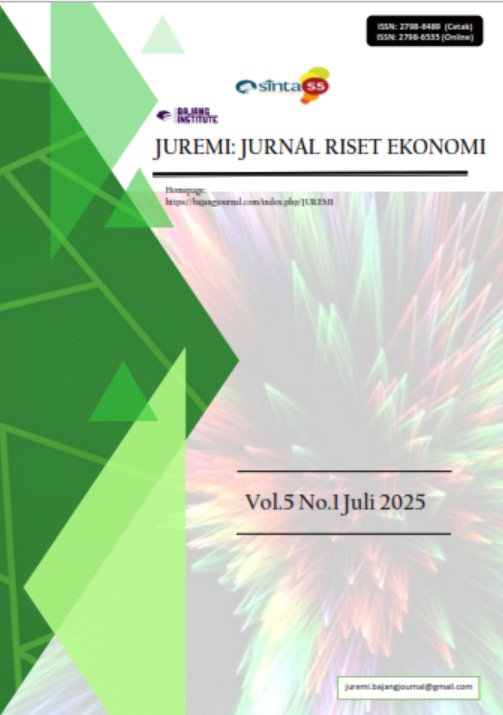PENGARUH PRODUK, HARGA, LOKASI, DAN PROMOSI TERHADAP KEPUASAAN KONSUMEN DENGAN PERUSAHAAN UNILEVER LEWAT DIGITAL MARKETING
DOI:
https://doi.org/10.53625/juremi.v5i1.11056Keywords:
Product, Price, Location, Promotion, Consumer SatisfactionAbstract
This study examines how marketing strategies, encompassing product, price, distribution, and promotion, influence consumer satisfaction with Unilever products, particularly within the context of digital marketing. In today's era of digital transformation, companies are required to adapt to technological developments and increasingly active consumer behavior on digital platforms. Unilever, as a multinational consumer goods company, employs various digital marketing strategies to reach and retain its customers. Through a quantitative approach and analysis of data from respondents who are active online Unilever consumers, this study found that all marketing variables—product, price, distribution, and promotion—have a significant impact on consumer satisfaction. The results also indicate that creative digital promotions and consistent product quality are dominant factors in shaping customer loyalty and satisfaction. The influential factor: promotion 0.341, F-test 13.771. This abstraction provides an overview of the importance of synergy between classic marketing strategies and digital innovation to maintain a company's relevance and competitive advantage in the modern marketplace.
References
Chaffey, D., & Ellis-Chadwick, F. (2023). Digital marketing (8th ed.). Pearson Education.
Creswell, J. W. (2014). Research design: Qualitative, quantitative, and mixed methods approaches (4th ed.). SAGE Publications.
Dehghani, M., & Tumer, M. (2015). A research on effectiveness of Facebook advertising on enhancing purchase intention of consumers. Computers in Human Behavior, 49, 597–600. https://doi.org/10.1016/j.chb.2015.03.051
Etikan, I., Musa, S. A., & Alkassim, R. S. (2016). Comparison of convenience sampling and purposive sampling. American Journal of Theoretical and Applied Statistics, 5(1), 1–4. https://doi.org/10.11648/j.ajtas.20160501.11
Ghozali, I. (2018). Aplikasi analisis multivariate dengan program IBM SPSS 25 (9th ed.). Badan Penerbit Universitas Diponegoro.
Indrasari, M. (2019). Perilaku konsumen dan komunikasi pemasaran. Prenadamedia Group.
Kim, J., Kim, S., & Wang, Z. (2021). The effects of pricing strategies on customer satisfaction and loyalty in e-commerce: The moderating role of online reviews. Journal of Retailing and Consumer Services, 60, 102488. https://doi.org/10.1016/j.jretconser.2021.102488
Kotler, P., & Armstrong, G. (2018). Principles of marketing (17th ed.). Pearson Education.
Kotler, P., & Keller, K. L. (2016). Marketing management (15th ed.). Pearson Education.
Liu, X., He, M., Gao, F., & Xie, P. (2020). The impact of perceived product information quality on consumers’ purchase intentions on social commerce platforms. Information & Management, 57(8), 103387. https://doi.org/10.1016/j.im.2020.103387
Santoso, S. (2017). Menguasai statistik multivariat dengan SPSS (2nd ed.). PT Elex Media Komputindo.
Sekaran, U., & Bougie, R. (2016). Research methods for business: A skill-building approach (7th ed.). Wiley.
Sugiyono. (2019). Metode penelitian kuantitatif, kualitatif, dan R&D. Alfabeta.
Zeithaml, V. A. (1988). Consumer perceptions of price, quality, and value: A means-end model and synthesis of evidence. Journal of Marketing, 52(3), 2–22. https://doi.org/10.1177/002224298805200302
















